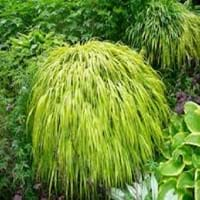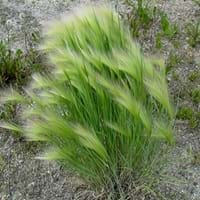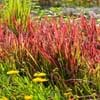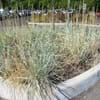Life Span
Perennial
Perennial
Origin
Japan
North America, South America, Europe, Southern Africa, Asia
Types
Not Available
Not Available
Habitat
meadows, Riverbanks, Wet Woods
Cultivated Beds
USDA Hardiness Zone
5-9
Not Available
AHS Heat Zone
9 - 5
Not Available
Sunset Zone
1a, 1b, 2a, 2b, 3a, 3b, 4, 5, 6, 7, 8, 9, 10, 11, 12, 13, 14, 15, 16, 17, 18, 19, 20, 21, 22, 23, 24
Not Available
Habit
Clump-Forming
Not Available
Minimum Height
Not Available
Minimum Width
Not Available
Flower Color
Blue Violet
Green
Flower Color Modifier
Bicolor
Bicolor
Leaf Color in Spring
Yellow, Green, Light Green
Green, Light Green, Gray Green
Leaf Color in Summer
Light Green
Light Green
Leaf Color in Fall
Orange, Yellow green, Orange Red
Not Available
Leaf Color in Winter
Green, Dark Green, Not Available
Not Available
Leaf Shape
Oblovate
Vertical
Plant Season
Spring, Summer, Fall
Not Available
Sunlight
Full Sun, Partial Sun, Partial shade
Full Sun
Type of Soil
Loam
Loam, Sand
The pH of Soil
Acidic, Neutral
Not Available
Soil Drainage
Well drained
Well drained
Bloom Time
Late Summer, Early Fall, Fall
Spring, Summer
Tolerances
Dry soil, Shallow soil
Drought
Where to Plant?
Ground
Ground
How to Plant?
From Rhizomes
Divison, Seedlings
Plant Maintenance
Medium
Medium
Watering Requirements
Keep ground moist
Average Water Needs, Do Not over Water
In Summer
Lots of watering
Lots of watering
In Spring
Consistently
Moderate
In Winter
Adequately
Average Water
Soil pH
Acidic, Neutral
Not Available
Soil Type
Loam
Loam, Sand
Soil Drainage Capacity
Well drained
Well drained
Sun Exposure
Full Sun, Partial Sun, Partial shade
Full Sun
Pruning
Prune grass to maintain level, Prune if you want to improve plant shape
No need to prune
Fertilizers
organic fertlizers
Nitrogen
Pests and Diseases
Not Available
wheat rust
Plant Tolerance
Shade areas, Shallow soil, Wet Site
Drought
Flowers
Insignificant
Not Available
Flower Petal Number
Single
Single
Edible Fruit
No
Not Available
Foliage Texture
Medium
Fine
Foliage Sheen
Matte
Matte
Attracts
Ants, Beetles, Caterpillar
Birds
Allergy
allergic conjunctivitis, Asthma, Rash
Pollen
Aesthetic Uses
Beautification, Ground Cover
Showy Purposes
Beauty Benefits
Not Available
Not Available
Environmental Uses
Provides ground cover, Shadow Tree
Air purification
Medicinal Uses
Acne, Aging, Laxative
Swollen eyelids
Part of Plant Used
Leaves
Root, Seeds
Other Uses
Can be made into a herbal tea, Showy Purposes
Roasted seed is used as a coffee substitute, Used as a cereal in making bread, porridge
Used As Indoor Plant
Sometimes
No
Used As Outdoor Plant
Yes
Yes
Garden Design
Container, Edging, Mixed Border, Rock Garden / Wall, Water Gardens
Cutflower, Dried Flower/Everlasting, Edible, Wildflower
Botanical Name
HAKONECHLOA macra 'Aureola'
HORDEUM jubatum
Common Name
Golden Japanese Forest Grass, Hakone Grass
Foxtail Barley, Wild Barley
In Hindi
जापानी वन घास
Foxtail Barley
In German
Japanische gras
Mähnengerste
In French
Forêt herbe japonaise
Foxtail Barley
In Spanish
forestales hierba japonesa
La cebada de cola de zorra
In Greek
Ιαπωνικά γρασίδι δάσος
αλωπέκουρου Κριθάρι
In Portuguese
floresta grama japonês
Foxtail Barley
In Polish
Japoński las lato
włośnica Jęczmień
In Latin
Forest gramina Italica
Hordeum foxtail
Phylum
Angiosperms
Magnoliophyta
Class
Monocots
Liliopsida
Genus
Hachanechloa
Hordeum
Clade
Angiosperms
Angiosperms, Commelinids, Monocots
Tribe
Not Available
Hordeeae
Subfamily
Arundinariinae
Pooideae
Number of Species
Not Available
Not Available
Importance of Japanese Forest Grass and Foxtail Barley
Want to have the most appropriate plant for your garden? You might want to know the importance of Japanese Forest Grass and Foxtail Barley. Basically, these two plants vary in many aspects. Compare Japanese Forest Grass and Foxtail Barley as they differ in many characteristics such as their life, care, benefits, facts, etc. Every gardener must at least have the slightest clue about the plants he wants to plant in his garden. Compare their benefits, which differ in many ways like facts and uses. The medicinal use of Japanese Forest Grass is Acne, Aging and Laxative whereas of Foxtail Barley is Swollen eyelids. Japanese Forest Grass has beauty benefits as follows: Not Available while Foxtail Barley has beauty benefits as follows: Not Available.
Compare Facts of Japanese Forest Grass vs Foxtail Barley
How to choose the best garden plant for your garden depending upon its facts? Here garden plant comparison will help you to solve this query. Compare the facts of Japanese Forest Grass vs Foxtail Barley and know which one to choose. As garden plants have benefits and other uses, allergy is also a major drawback of plants for some people. Allergic reactions of Japanese Forest Grass are allergic conjunctivitis, Asthma and Rash whereas of Foxtail Barley have Pollen respectively. Having a fruit bearing plant in your garden can be a plus point of your garden. Japanese Forest Grass has no showy fruits and Foxtail Barley has showy fruits. Also Japanese Forest Grass is not flowering and Foxtail Barley is not flowering . You can compare Japanese Forest Grass and Foxtail Barley facts and facts of other plants too.





